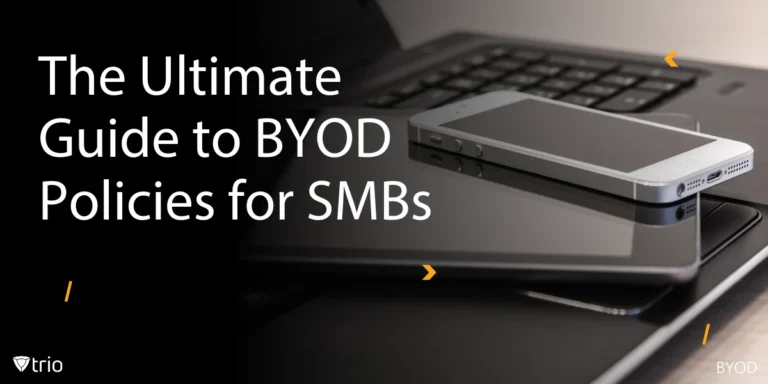From the enthusiastic welcome of a new hire to the bittersweet farewell of a departing colleague, the employee lifecycle encompasses a company's entire relationship with its workforce. While the onboarding process sets the stage for success, ensuring a smooth transition during an employee offboarding process is equally important. This not only protects company assets but also fosters a positive and lasting impression. Here's where the Employee Equipment Agreement comes into play. This crucial document outlines responsibilities and expectations for both the company and employee, especially regarding company-issued equipment. In this blog we will dive into the importance of an Employee Equipment Agreement within the employee lifecycle. We'll explore how this agreement protects company property while ensuring a smooth offboarding process for departing employees.
What is an Employee Equipment Agreement?
An Employee Equipment Agreement is a formal document that establishes clear expectations for both the company and its employees regarding company-issued equipment. This agreement serves a critical purpose in safeguarding the company's assets while ensuring IT compliance throughout the employee's employment. It outlines the employee's responsibilities throughout their time in office, ensuring the proper care, use, and security of equipment like laptops, mobile phones, and tablets. The agreement typically details best practices for handling the equipment, reporting any damage or loss, and following company policies on software installation and data security. By establishing these expectations upfront, both parties can ensure a smooth and responsible workflow.

Key Elements of an Employee Equipment Agreement
A well-crafted Employee Equipment Agreement outlines clear expectations for both the company and employee regarding company-issued equipment. Here are some key elements that companies can use in their agreements:
Equipment Coverage
The agreement should explicitly define "Company-Owned Assets" as equipment provided for work purposes. This can include laptops, desktops, mobile phones, tablets, peripherals, and potentially software licenses.
Employee Responsibilities
The agreement should place the responsibility on employees for the proper care and use of company equipment, restricting its use solely to work-related tasks. It establishes a clear reporting process for any damage, malfunction, or loss of equipment, ensuring prompt notification to supervisors. Additionally, while data security doesn't have to be explicitly addressed, the agreement should imply adherence to company policies in this area, considering some equipment might contain sensitive information.
Company Responsibilities
Providing Work Equipment: The agreement acknowledges the company's responsibility to furnish the employees with the necessary equipment to perform their duties.
Employee Departure
In the event of an employee's departure or termination of cooperation, the agreement outlines a clear and defined process for returning all company equipment. This ensures a smooth transition and minimizes the risk of lost or unaccounted-for assets. While data access restriction doesn't have to be explicitly mentioned, the agreement implies that the company will take steps to restrict access to company data upon equipment return. This helps safeguard sensitive information.
Click on the link below to download our Employee Equipment Agreement template and start creating yours today.
Benefits of an Employee Equipment Agreement
A well-crafted Employee Equipment Agreement offers a win-win situation for both companies and employees. Here's how:
Safeguards Company Assets
The agreement acts as a shield against loss or damage to company property due to employee negligence. By clearly outlining expectations for care and use, the agreement minimizes the risk of accidental or irresponsible handling of valuable equipment.
Streamlines Offboarding
When an employee leaves the company, a smooth offboarding process is crucial. The agreement ensures a clear and efficient transition by outlining expectations for equipment return. This eliminates confusion and minimizes delays during the offboarding process.
Minimizes Data Security Risks
By requiring an equipment return form as part of the Employee Equipment Agreement upon an employee's departure and revoking access to data, the agreement significantly reduces the risk of data security breaches. This protects sensitive company information from unauthorized access after an employee leaves the organization.
Considerations for HR Departments
Employee Equipment Agreements play a critical role in ensuring a smooth employee lifecycle. But their effectiveness hinges on proper implementation. Here's where the HR department shines.
The HR department is ideally positioned to draft and implement these agreements. Their expertise in company policies and procedures allows them to craft clear and comprehensive agreements that address potential issues and align with existing security protocols.
Furthermore, including the agreement within the employee onboarding process is crucial. During onboarding, HR can introduce the agreement and explain its importance in responsible equipment use. This sets clear expectations from the outset of employment and fosters a culture of accountability.
The benefits extend beyond onboarding. When it comes to offboard employees, the agreement streamlines the process for HR. The defined return procedures for company equipment eliminate confusion and ensure a smooth handover. This allows HR to focus on other important aspects of the offboarding process, such as conducting a successful exit interview to gain valuable insights for future improvements.

Conclusion: Streamline Offboarding and Secure Your Assets
Employee Equipment Agreements foster responsibility and ensure a smooth exit for employees who are leaving the company. By outlining clear expectations for equipment return, they minimize delays during offboarding of an employee, allowing HR to focus on other responsibilities. But what if a device goes missing? Mobile Device Management (MDM) bridges that gap. Trio's MDM solution seamlessly complements your agreements. It enforces security policies and lets you remotely wipe lost devices or remove company data upon employee departure, ensuring a smooth and secure offboarding process. Don't wait – implement an Equipment Agreement together with Trio's free demo for a secure and efficient offboarding process that protects your assets and leaves a positive final impression, even after the final paycheck is issued.
Get Ahead of the Curve
Every organization today needs a solution to automate time-consuming tasks and strengthen security.
Without the right tools, manual processes drain resources and leave gaps in protection. Trio MDM is designed to solve this problem, automating key tasks, boosting security, and ensuring compliance with ease.
Don't let inefficiencies hold you back. Learn how Trio MDM can revolutionize your IT operations or request a free trial today!





